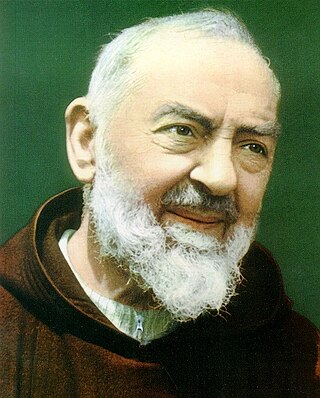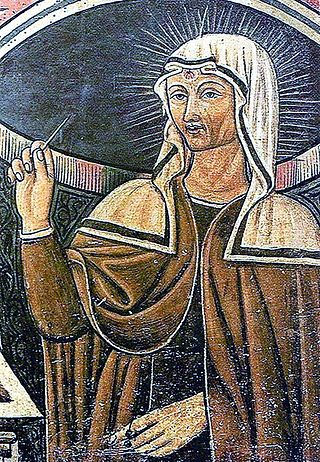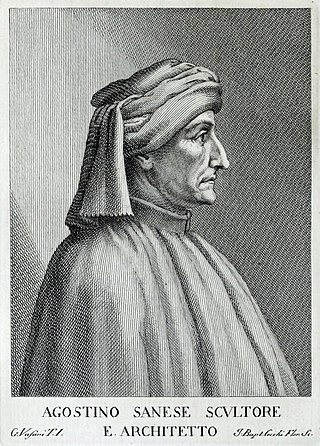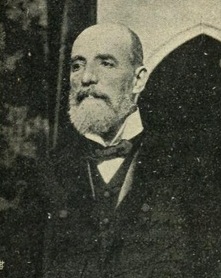
Agostino Carracci was an Italian painter, printmaker, tapestry designer, and art teacher. He was, together with his brother, Annibale Carracci, and cousin, Ludovico Carracci, one of the founders of the Accademia degli Incamminati in Bologna. This teaching academy promoted the Carracci emphasized drawing from life. It promoted progressive tendencies in art and was a reaction to the Mannerist distortion of anatomy and space. The academy helped propel painters of the School of Bologna to prominence.

Pio of Pietrelcina, widely known as Padre Pio, was an Italian Capuchin friar, priest, stigmatist, and mystic. He is venerated as a saint in the Catholic Church, celebrated on 23 September.

Rita of Cascia, born Margherita Ferri Lotti - Mancini, was an Italian widow and Augustinian nun venerated as a saint in the Roman Catholic Church.

Agostino Steffani was an Italian bishop, polymath, diplomat and composer.

Agostino Lanzillo was an Italian revolutionary syndicalist leader who later became a member of Benito Mussolini's fascist movement.

The Senate of the Republic, or simply the Senate, is the upper house of the bicameral Italian Parliament. The two houses together form a perfect bicameral system, meaning they perform identical functions, but do so separately. Pursuant to the Articles 57, 58, and 59 of the Italian Constitution, the Senate has 200 elective members, of which 196 are elected from Italian constituencies, and 4 from Italian citizens living abroad. Furthermore, there is a small number of senators for life, either appointed or ex officio. It was established in its current form on 8 May 1948, but previously existed during the Kingdom of Italy as Senato del Regno, itself a continuation of the Senato Subalpino of Sardinia established on 8 May 1848. Members of the Senate are styled Senator or The Honourable Senator and they meet at Palazzo Madama, Rome.

Agostino Straulino was an Italian sailor and sailboat racer, who won one Olympic gold medal and one silver medal in the Star class, and eight consecutive European championships and two world championships in this class and was world champion in the 5.5m-class.

Agostino Bassi, sometimes called de Lodi, was an Italian entomologist. He preceded Louis Pasteur in the discovery that microorganisms can be the cause of disease. He discovered that the muscardine disease of silkworms was caused by a living, very small, parasitic organism, a fungus that would be named eventually Beauveria bassiana in his honor. In 1844, he stated the idea that not only animal (insect), but also human diseases are caused by other living microorganisms; for example, measles, syphilis, and the plague.

Agostino da Siena or Agostino di Giovanni was an Italian architect and sculptor, active between 1310 and 1347.

Agostino Scilla was an Italian Baroque painter, paleontologist, geologist, numismatist, and a pioneer in the study of fossils and in scientific illustration. In addition to his paintings, he published an early text on paleontology: La vana speculazione disingannata dal senso which was introduced to English audiences by William Wotton of the Royal Society in 1696. He was among the first to promote a scientific understanding of fossils in contrast to fantastic Biblical and divine interpretations.

The Diocese of Osimo e Cingoli was a Roman Catholic diocese in Italy.

The Diocese of Osimo was a Roman Catholic diocese in Italy.

Lorenzo Lotti, also known as Lorenzetto, (1490–1541), born Lorenzo di Lodovico di Guglielmo, was an Italian Renaissance sculptor and architect in the circle of Raphael.

Ruggero Maccari was an Italian screenwriter.
Maccari is an Italian surname. Notable people with the surname include:

Cesare Maccari was an Italian painter and sculptor, most famous for his 1888 painting Cicerone denuncia Catilina.

The Palace of Justice, colloquially nicknamed il Palazzaccio, is the seat of the Supreme Court of Cassation and the Judicial Public Library of Italy. It is located in the Prati district of Rome, facing Piazza dei Tribunali, Via Triboniano, Piazza Cavour, and Via Ulpiano.
Agostino is both a masculine Italian given name and an Italian surname. Notable people with the name include:

Saint John, the Beheaded is a 1940 Italian comedy film directed by Amleto Palermi and Giorgio Bianchi and starring Totò, Titina De Filippo and Silvana Jachino. It was based on a play by Nino Martoglio. The film was made at the Cinecittà Studios in Rome.
Giacomo Maccari was an Italian opera composer.
















